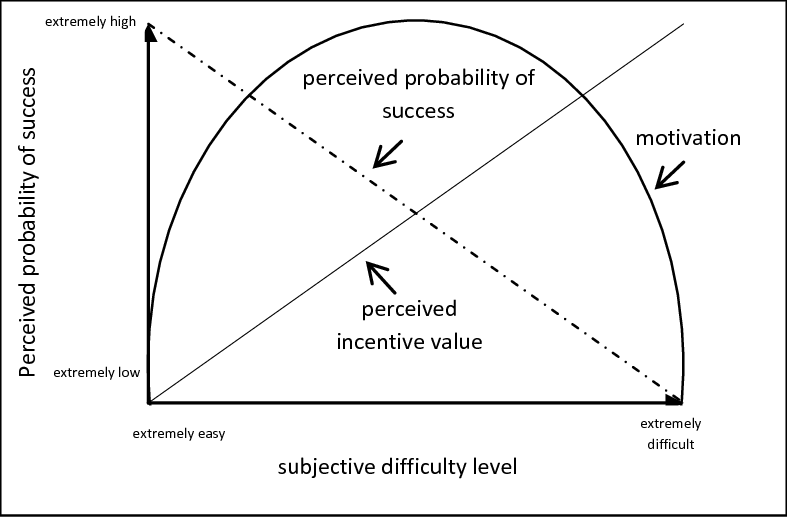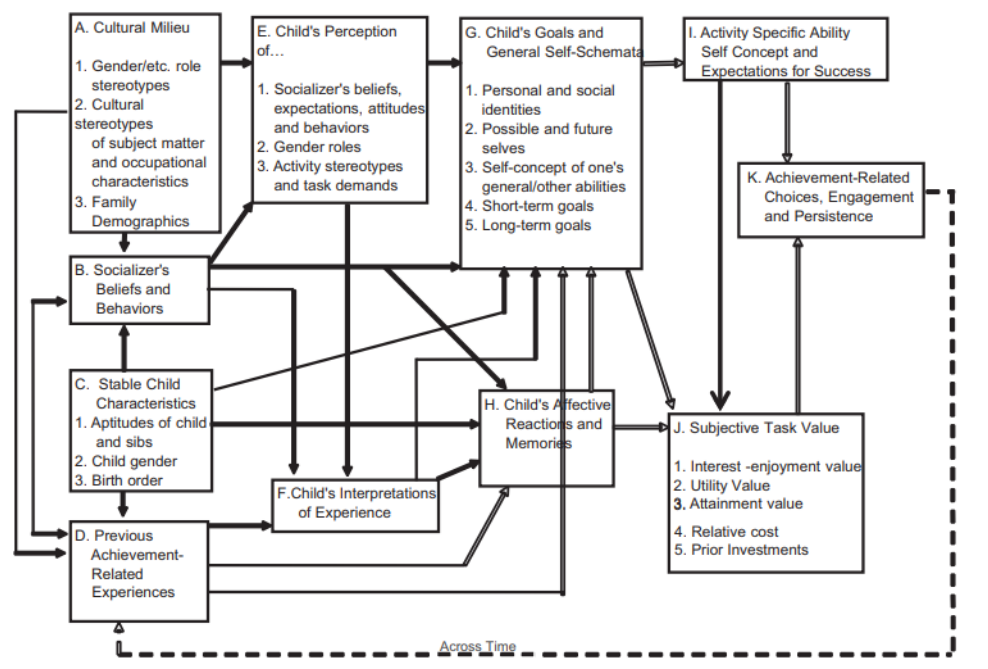Motivation has been always considered an important asset for achievement in education as well as in life. Maehr & Meyer (1997) said that: “One thing that is most certain about the past as well as the future is the importance of motivation in the practice of education”. The words of Terrel Bell, former US Secretary of Education have been quoted in many articles: “There are three things to remember about education. The first is motivation. The second one is motivation. The third one is motivation” (in Ames, 1990; Covington, 2000; Maehr & Meyer, 1997).
Educational psychologists give special attention to motivation in school contexts, however, even though most of the theories in academic motivation are developmental, they rarely focus on adults. Adults’ motivation for participation in education and training is being increasingly mentioned in relevant European policies and frameworks (see European Agenda for Adult Learning, Upskilling Pathways, Education and Training 2020, European Skills Agenda). Notwithstanding, it is usually not accompanied with any theoretical framework or evident practice, therefore, it remains an ambiguous element.
Several approaches and theories of academic motivation have been developed throughout time because of its diverse character since the very beginning of its research (e.g. achievement goal theory, social cognitive theory, expectancy-value theory, self-determination theory). One of the most important distinction among theories is the fact that academic motivation is perceived as both a non-cognitive outcome and a predictor of other outcomes. For example, in adult learning contexts, motivation could be the result of attendance of an effective programme or a required asset for participation and success. This is an important distinction to perceive as it leads to different solutions in practice. When we refer to motivation for participation, interventions are more likely to involve incentives and stimuli from policy-level initiatives. On the other hand, if we refer to motivation in terms of engagement during the learning process, the attention goes to institutions and educators’ practice.
The expectancy-value theory (EVT; Eccles, 1983) has managed to depict the complexity of factors that might affect motivation. This theory is based on the initial work of Atkinson (1957) who claimed that achievement motivation is a result of a function between two components: the perceived probability of success and the subjective difficulty level of a certain activity or task (figure 1). This simple illustration can provide us essential profound information regarding the perspective of adults (e.g. low-skilled). What possibilities would you have to succeed in a training course in contexts you have never enjoyed and endeavoured? What value would offer a course that cannot ensure any improvement in your life?

Figure 1. Theory of achievement motivation by Atkinson 1957 (Klampfer, 2015)
Further elaborations of EVT attempted to develop a comprehensive framework of the internal processes and background factors that affect motivation as well as the interactions between them (e.g. Eccles et al., 2015; Barron & Hulleman, 2015). Getting straight to practice, based on the theoretical basis that has been developed (see for example figure 2), researchers proposed interventions that can be divided in three main categories: expectancy-related, value-related, and cost-related. These interventions offer valuable ideas to be adapted for the enhancement of adults’ motivation for participation in education and training.
- Expectance Interventions
- Attribution retaining: The purpose of these type of interventions is to change adults’ cognitive attributions towards success and failure, usually by educating them that academic achievement is alterable and falls within their control (e.g. increasing effort).
- Growth mindset: These interventions aim to change adults’ perceptions abut their capacity to learn. They might even provide knowledge about brain functions towards development and emphasize that growth comes through effort, persistence, problem solving exercise and learning.
- Value interventions
- Utility-value: These interventions aim to highlight courses’ usefulness and relevance in adults’ daily lives. Adults might be called to identify by their own the reasons why an activity or subject is conducted and how it be applied in real life contexts.
- Providing opportunities and conditions for choices: This type of interventions aim to enhance autonomy and ownership. Autonomy is also one the core concepts of self-determination theory (SDT; Ryan & Deci, 2009), which supports that individuals are more intrinsically motivated when they feel in control of their choices.
- Cost interventions
- Values affirmation: These interventions strive to tackle stereotype threats for under-performance because of social, peer or family beliefs. It involves revitalizing important values and aspects for achievement and success.
- Belongingness: Also found as relatedness, is one of the major psychological needs for motivation in learning contexts also for SDT. These interventions target to bring up to the surface positive examples of others, mutual suffering or truths like negative feelings are temporary and achievement is possible.
There is evidence that when the above practices are not carefully designed and implemented, they might cause no effect on individuals (Piesch et al., 2019). Therefore, special attention is needed when deciding what is going to be implemented, by whom, when, how, why and to whom -as the one size fits all concept is unrealistic in psychological contexts-. As there are several practices that could be embraced, it should be acknowledged that fostering motivation it consists a collective effort between practitioners, educators, and adults themselves.

Figure 2. The expectancy-value model of achievement of Eccles et al. (2015)
The expectancy-value model of achievement developed by Eccles and others (figure 2; 2015) illustrates the complexity of background factors and internal processes of individuals that result to different levels of motivation. A deeper look will possibly make you wonder about the levels of motivation you have in several domains. Personally, I believe that how far we could go and transform established experiences and beliefs, depends only to our personal willing for change.
Demos Michael is project researcher at CARDET (Center for the Advancement of Research & Development in Educational Technology) while his expertise focuses on educational research. He is interested in topics related to equity and inclusion of educational effectiveness, as well as non-cognitive processes that affect academic achievement. More specific fields of interest are motivation, achievement choices, expectancy beliefs, mindset, perseverance, persistence, self-efficacy and others. He has been recently involved in the implementation of various projects in adult education and other research activities. He believes that all individuals have a special capability on at least one domain where they can develop genius.
References
Ames, C. (1992). Classrooms: Goals, structures, and student motivation. Journal of Educational Psychology, 84(3), 261–271. https://doi.org/10.1037/0022-0663.84.3.261
Barron, K. E., & Hulleman, C. S. (2015). The expectancy-value-cost model of motivation. In J. D. Wright (Ed.), International encyclopedia of the social and behavioral sciences, 2nd edition (Vol. 8, pp. 503–509). Oxford: Elsevier Ltd.
Covington, M. V. (2000). Goal theory, motivation, and school achievement: an integrative review. Annual Review of Psychology, 51, 171–200.
Eccles, J. S. (1983). Expectancies, values, and academic behaviors. In J. T. Spence (Ed.), Achievement and achievement motives: Psychological and sociological approaches (pp. 75–146). Freeman.
Eccles, J. S., Fredricks, J. A., & Baay, P. (2015). Expectancies, values, identities, and self-regulation. In G. Oettingen & P. M. Gollwitzer (Eds.), Self-regulation in adolescence. (pp. 30–56). Cambridge University Press. https://doi.org/10.1017/CBO9781139565790.003
Klampfer, A. (2015). Holistic Impulses for Teaching and Learning: Self –Determination Theory of Motivation in Teaching and Learning Processes. In: Njoku, M.G., Anieke, C.C., McDevitt, P.J. (2015). Frontiers in Education. Advances, Issues and New Perspectives. Enugu: ABIS Books, p. 214-243.
Maehr, M. L. & Meyer, H. A. (1997). Understanding Motivation and Schooling: Where We’ve Been, Where We Are, and Where We Need to Go. Educational Psychology Review, 9(4), 371.
Piesch, H., Häfner, I., Gaspard, H., Flunger, B., Nagengast, B., & Harackiewicz, J. M. (2019). Helping parents support adolescents’ career orientation: Effects of a parent-based utility-value intervention. Unterrichtswissenschaft (Springer Science & Business Media B.V.), 47(3), 271.
Ryan, R. M., & Deci, E. L. (2000). Self-Determination Theory and the Facilitation of Intrinsic Motivation, Social Development, and Well-Being. American Psychologist, 1, 68.
